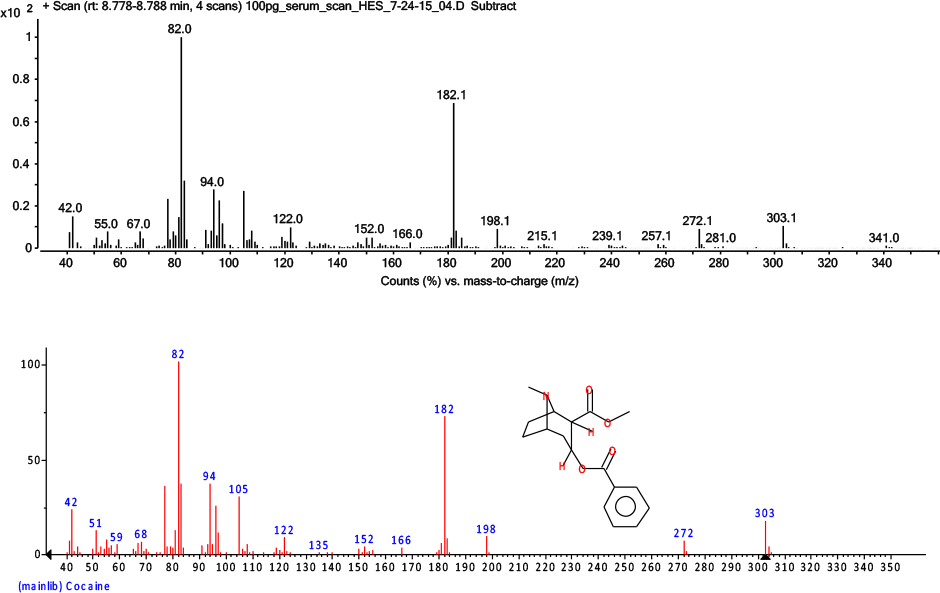Access Agilent eNewsletter November 2015
>> Update My Profile | Subscribe to Access Agilent | Article Directory
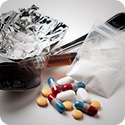
Screen more drugs, more efficiently using the Agilent GC/MS Toxicology Analyzer with new high efficiency source
Forensic Toxicology
By Melissa Churley and Luis Cuadra-Rodriguez
Agilent Senior Applications and R&D Scientists
Broad-range screening for drugs in biological samples requires full-spectrum MS identification for an unlimited number of targets, as well as spectral identification of non-targets. While selected ion monitoring (SIM) provides the sensitivity you need for low-level drug analyses, it does not provide the full spectra required for confident drug identifications – especially when retention times are unknown. With the new Agilent 5977B Series GC/MSD System, you achieve both full spectra and improved detection limits for drug analyses.
The Agilent GC/MS Toxicology Analyzer, which may now be configured with the new Agilent 5977B GC/MSD, includes Agilent Deconvolution Reporting Software (DRS), and the Forensic Toxicology Database Library. The new Agilent 5977B GC/MSD with a high efficiency source (HES) provides even lower detection limits than the previous model with its sensitive Extractor EI Source. Now you can screen a greater number of targets at low levels with reduced analysis times.
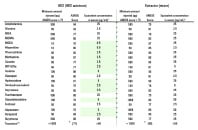 Enlarge
Enlarge
Table 1. Green highlights show drugs detected at lower concentrations with the new high efficiency source (HES) of the Agilent 5977B GC/MSD. Detection is based on match to library spectra.
Screen at lower concentrations with the high efficiency source
To demonstrate improved screening capability with the Agilent HES, we analyzed for drugs in a typical sample – human serum. We extracted 2 mL of blank serum using the Agilent Bond Elut Certify general drug screen method M2721[1]. We reconstituted the sample in 0.1 mL methanol that was spiked with the Agilent GC/MS Toxicology Checkout Mixture to yield 10-1000 ng/mL (in vial) of underivatized standards. We added the synthetic opioid fentanyl to the checkout mixture.
Table 1 shows the lowest injected amounts of drugs in spiked serum extract that we detected with the combination of Agilent DRS and automated mass spectral deconvolution and identification software (AMDIS) using a minimum match factor of 75. We highlighted drugs found at lower concentrations using the Agilent HES than the Agilent Extractor EI Source. Tuning conditions are listed in parentheses in the table headers. The method is based on that described in Agilent Application Notes 5989-8582EN and 5990-7596EN.
Drug target compounds screened in serum – such as methadone, cocaine, hydrocodone, and tetrahydrocannabinol (THC) – can now be positively identified using full-scan mode at lower concentrations (for example, 5 ng/mL for hydrocodone). The Agilent HES maximizes the number of ions that are created in the source and transferred into the quadrupole mass analyzer, which equates to more signal and better sensitivity. This increase in response allows you to find more drug targets with excellent library matches during the screening process.
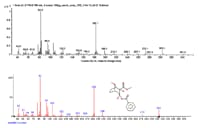 Enlarge
Enlarge
Figure 1. The full-scan spectrum of only 100 pg cocaine provides a good library match.
NIST-searchable spectra with isomer differentiation
Forensic chemists are required to identify drugs of abuse with the highest degree of scientific certainty. To some extent, the issue of cocaine isomer determination has reinforced the requirement for methods of high specificity [2]. When configured with the new 5977B GC/MSD with a high efficiency source (HES), the Agilent GC/MS Toxicology Analyzer delivers the strict spectral integrity that is required to differentiate between cocaine isomers and to obtain NIST-searchable spectra for detected drugs.
Figure 1 shows the mass spectrum of 100 pg cocaine spiked in serum (top) compared with the NIST spectrum (bottom). Cocaine is the first hit in NIST; the Match Factor is 810 (“good”) and is differentiated from pseudococaine, which has a Match Factor of 788 (“fair”). The equivalent concentration is 5 ng/mL, based upon complete recovery. The NIST library search provides excellent matches for cocaine as a first hit at concentrations above this level.
Report lower levels in minutes with the Agilent 5977B and instant DRS reporting
The high efficiency source of the Agilent 5977B GC/MSD greatly enhances the signal of drug targets and provides spectra that are classical and NIST-searchable. When combined with Agilent Deconvolution Reporting Software, detection levels during full-scan screening analyses approach those of SIM analyses of derivatized samples.
If you need a rapid, reliable, sensitive method to screen samples for drugs and you want the confidence that library-searchable full-scan MS spectra provide, investigate details of the Agilent GC/MS Toxicology Analyzer which can now be configured with the new 5977B GC/MSD with a high efficiency source.
Acknowledgements
The authors thank Bruce Quimby and Fred Feyerherm for their insights on this work and Nathan Contino for his contributions.
References
- “Agilent Bond Elut Certify and Certify II Methods Manual,” Agilent Technologies, Inc. Publication number 5991-4939EN, 2014.
- Schlesinger, H.L. “Topics in the chemistry of cocaine,” United Nations Office on Drugs and Crime Web site bulletin.
For Forensic Use only. Information is subject to change without notice.
>> Update My Profile | Subscribe to Access Agilent | Article Directory
Table 1.
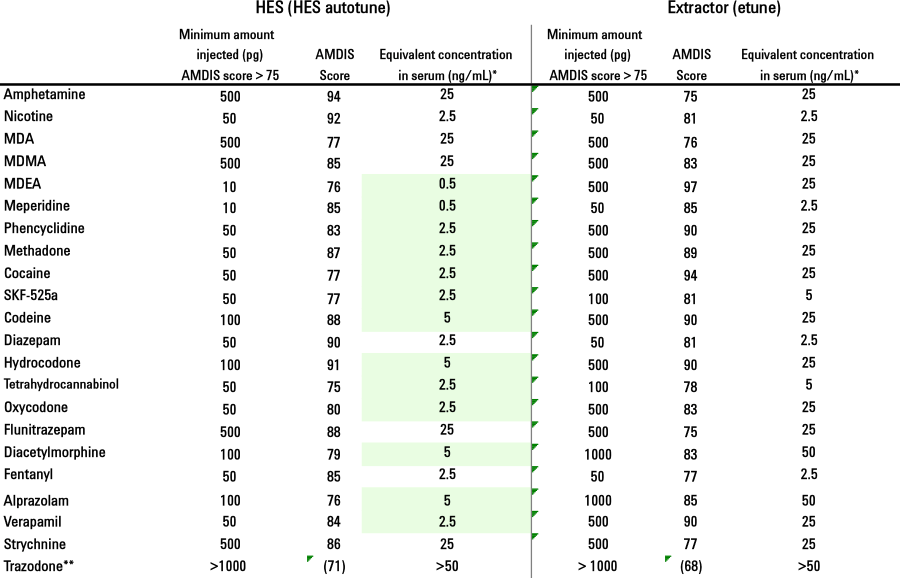
* Assumes 100% recovery from a 2 mL serum sample, reconstitution of extract in 0.1 mL and 1 µL injected.
** The amount of injected trazodone required to achieve a score of 75 exceeds 1000 pg.
The benzodiazepines oxazepam, lorazepam, temazepam, nitrazepam , and clonazepam were not found at 1000 pg.
Green highlights show drugs detected at lower concentrations with the new high efficiency source (HES) of the Agilent 5977B GC/MSD. Detection is based on match to library spectra.
